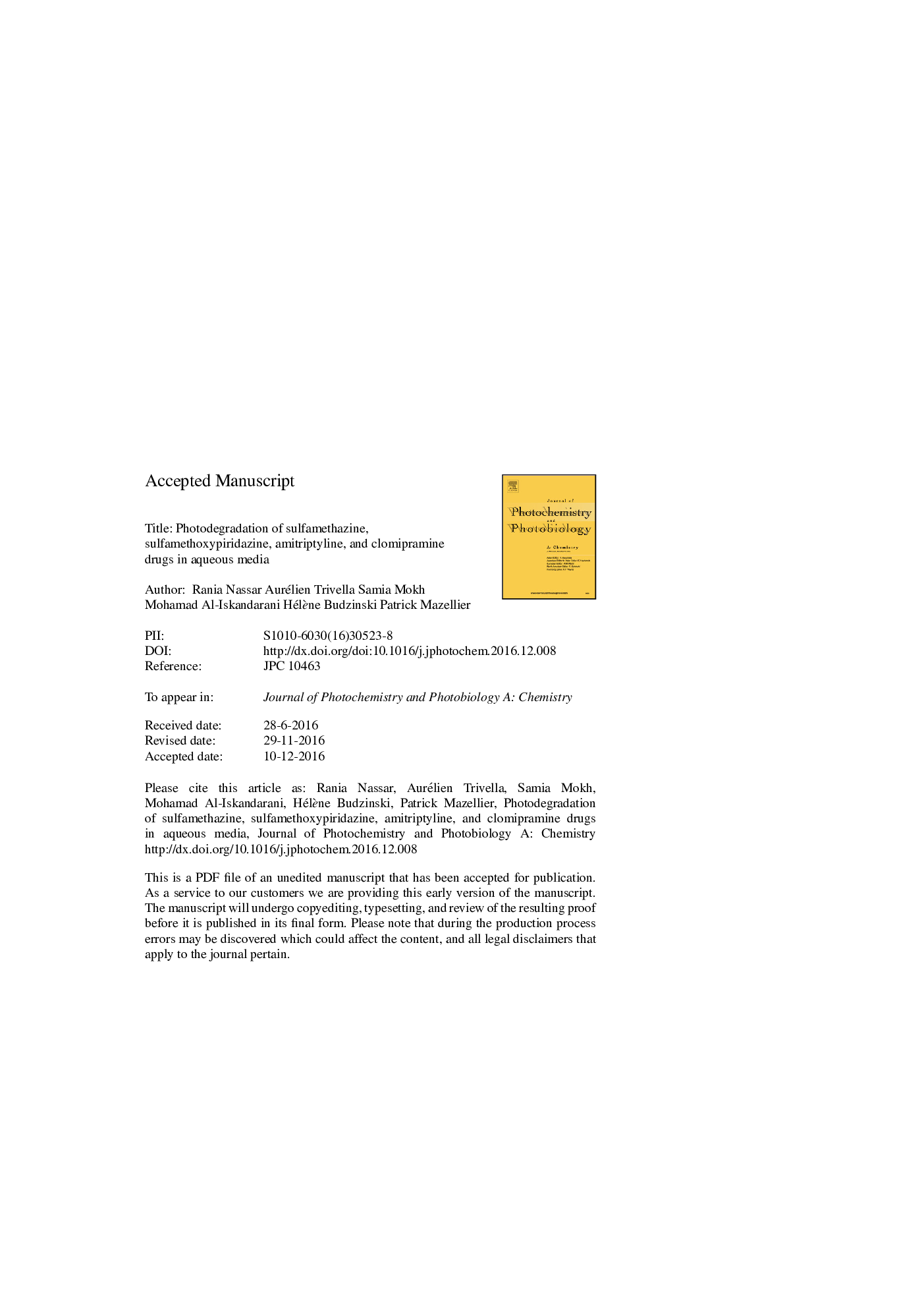| Article ID | Journal | Published Year | Pages | File Type |
|---|---|---|---|---|
| 4754022 | Journal of Photochemistry and Photobiology A: Chemistry | 2017 | 27 Pages |
Abstract
The photochemical transformation of two antibacterial sulfonamides, namely sulfamethazine (SMT) and sulfamethoxypyridazine (SMP), and two tricyclic antidepressants, namely amitriptyline (AMT) and clomipramine (CMP) were investigated. Experiments conducted in river water under artificial sunlight irradiation show an acceleration of the degradation for SMT, SMP, and CMP of a factor 1.6-7.7 by comparison to purified water. This acceleration is, at least partially, due to photosensitized reactions which can occur in river water. The photodegradation of CMP was particularly fast. In addition, no degradation was observed for AMT in purified water while photosensitized reaction occurs. Under ultra-violet (254Â nm) irradiation in purified water, the four drugs were degraded. Calculated quantum yields of photodegradation were of 4.3Â ÃÂ 10â3, 5.1Â ÃÂ 10â3, 7.6Â ÃÂ 10â3, and 65.0Â ÃÂ 10â3 respectively for SMT, SMP, AMT, and CMP. UV coupled with hydrogen peroxide (UV/H2O2) was used as an advanced oxidation process for water depollution. The calculated second order rate constants of reaction with hydroxyl radicals were of 5.0Â ÃÂ 109, 5.0Â ÃÂ 109, 8.0Â ÃÂ 109 and 9.5Â ÃÂ 109Â LÂ molâ1Â sâ1 for SMT, SMP, AMT and CMP, respectively. Finally, the structures of photoproducts were proposed according to LC-MS/MS analyses. The elimination of SO2 was the main photochemical process for SMT and SMP. In the case of AMT and CMP, hydration and hydroxylation, respectively, were observed.
Related Topics
Physical Sciences and Engineering
Chemical Engineering
Bioengineering
Authors
Rania Nassar, Aurélien Trivella, Samia Mokh, Mohamad Al-Iskandarani, Hélène Budzinski, Patrick Mazellier,
